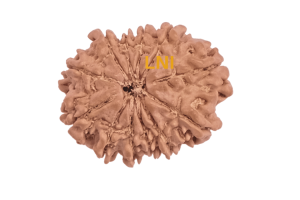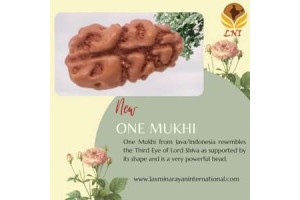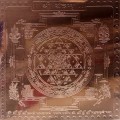Shree Yantra Significance and worship
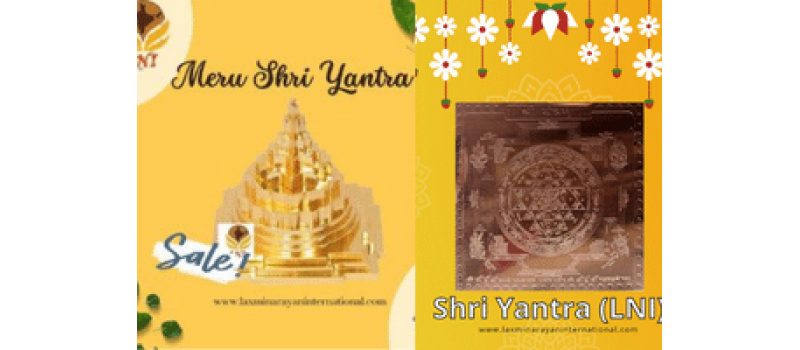
Shree
Yantra, also known as Sri Yantra or Shri Chakra, is a sacred geometrical
diagram or pattern that is considered to be one of the most powerful and
auspicious yantras in Hinduism. It is a complex design consisting of nine
interlocking triangles, which are surrounded by two circles of lotus petals,
and enclosed in a square.
The
Shree Yantra is a representation of the union of the divine masculine and
feminine energies and is considered to be a symbol of prosperity, abundance,
and harmony. It is believed to have a powerful energetic effect on the
environment and the people who come into contact with it.
The
Shree Yantra is worshipped in Hinduism as a tool for meditation and spiritual
growth, and is also used in rituals and ceremonies to invoke blessings and
positive energies. It is believed to help awaken the divine feminine energy
within oneself, which is associated with creativity, intuition, and inner
wisdom.
Shree
Yantra has been given the title of Yantra Raaj out of all the Yantras in this universe
since it is capable of providing both happiness and liberation. It is the most
powerful of all the yantras.
The
design of the Shree Yantra is said to be based on the principles of sacred
geometry, which is the study of the mathematical patterns found in nature and
the cosmos. It is believed that by meditating on the Shree Yantra, one can
access the universal energy and align oneself with the natural order of the
universe, leading to greater abundance, fulfillment, and spiritual
enlightenment.
Shree
Yantra is considered to be a powerful tool for worship and meditation in
Hinduism. Here are some of the benefits associated with Shree Yantra worship:
Attracts
prosperity and abundance: Shree Yantra is believed to help
attract wealth, success, and abundance. It is said to enhance financial
stability, prosperity, and growth in all areas of life, including business,
career, and relationships.
Promotes
spiritual growth and well-being: Shree Yantra is considered
to be a powerful tool for spiritual growth and well-being. It is believed to
help balance and align the chakras, enhance intuition, and deepen one's
connection to the divine.
Removes
negative energies: Shree Yantra is believed to have the power
to remove negative energies and obstacles from one's life. It is said to
protect the worshipper from negativity, fear, and anxiety and help promote
positivity and inner peace.
Enhances
concentration and focus: Shree Yantra is said to help enhance
concentration and focus, leading to greater productivity and success in all
areas of life.
Promotes
physical healing: Shree Yantra is believed to have a positive
impact on one's physical health, as it is said to help balance the body's
energy and promote healing.
Overall,
Shree Yantra worship is believed to bring a range of benefits, including
material and spiritual prosperity, positive energy, and overall well-being. It
is an ancient and sacred practice that is still widely used today as a tool for
meditation, worship, and personal growth.
Geometry
of the Shree Yantra:
Central
Point: The center of the Shree Yantra is a small dot, representing the supreme
reality or the source of all creation.
Bindu:
The dot is surrounded by a series of concentric circles, which represent the
three states of existence - waking, dreaming, and deep sleep. The central point
is also known as Bindu, which represents the point of creation.
Triangles:
The nine interlocking triangles of the Shree Yantra are arranged in a specific
way to create a star shape. Four of these triangles point upwards, while five
point downwards. The upward-pointing triangles represent the masculine or Shiva
energy, while the downward-pointing triangles represent the feminine or Shakti
energy.
Lotus
petals: The triangles are surrounded by lotus petals, which represent the
divine consciousness or the awakened state of the mind. There are 8 petals in
the first layer, 16 petals in the second layer, and 10 petals in the third
layer.
Square:
The lotus petals are enclosed within a square, which represents the material world
or the earthly plane of existence.
Circles:
The square is surrounded by three circles, which represent the three gunas or
the three qualities of nature - sattva, rajas, and tamas.
Gateways:
The outermost layer of the Shree Yantra consists of a series of gateways or
portals, which represent the different stages of spiritual evolution.
The
geometry of the Shree Yantra is believed to be a powerful tool for meditation
and worship, as it is said to represent the interconnectedness of the universe
and the ultimate reality of existence.
Placing
the Shree Yantra
Shree
Yantra is a sacred geometrical diagram that is considered to be a powerful tool
for worship and meditation in Hinduism. Here are some guidelines for where to
place the Shree Yantra:
North-east
corner: According to Vastu Shastra, an ancient Indian science
of architecture, the north-east corner of a house is considered to be the most
auspicious place to keep the Shree Yantra. This is believed to enhance the
positive energies and bring prosperity, harmony, and spiritual growth.
Pooja
room:
The Shree Yantra can be placed in the pooja room or sacred space of your home,
as it is a powerful tool for worship and meditation. It is believed to help
enhance the spiritual atmosphere of the room and promote positive energies.
Office
or business place: The Shree Yantra can be placed in an office
or business place, as it is believed to attract success, prosperity, and
abundance. It is said to promote positive energy, productivity, and growth in
business and career.
Altar
or meditation space: The Shree Yantra can be placed on an altar
or meditation space, as it is a powerful tool for spiritual growth and
well-being. It is believed to help balance and align the chakras, enhance
intuition, and deepen one's connection to the divine.
It
is important to note that the Shree Yantra should be placed with respect and
reverence, and should be kept clean and well-maintained. It should be
worshipped regularly with devotion and gratitude.
When
to worship shree yantra
Shree
Yantra is a powerful tool for worship and meditation in Hinduism, and can be
worshipped at any time. However, there are certain auspicious days and times
when the worship of Shree Yantra is believed to be particularly beneficial.
Here are some guidelines for when to worship Shree Yantra:
Fridays:
Friday is considered to be an auspicious day for the worship of Shree Yantra.
It is believed to be the day when the goddess of wealth, Lakshmi, is most
receptive to worship and offerings.
Full
moon:
The full moon day, or Purnima, is considered to be an auspicious time for the
worship of Shree Yantra. It is believed to enhance the positive energies and
bring abundance, prosperity, and growth.
Navratri:
Navratri, a nine-day festival celebrated in honor of the goddess Durga, is
considered to be a powerful time for the worship of Shree Yantra. It is
believed to enhance spiritual growth, well-being, and abundance.
Maha
Shivaratri: Maha Shivaratri, a festival dedicated to Lord Shiva, is
also considered to be an auspicious time for the worship of Shree Yantra. It is
believed to enhance spiritual growth, prosperity, and well-being.
During
auspicious occasions: Shree Yantra can be worshipped during auspicious
occasions like Akshay Tritiya, weddings, housewarming ceremonies, and other
important events. It is believed to enhance the positive energies and bring
prosperity and growth to the occasion.
It
is important to note that the worship of Shree Yantra should be done with
respect and devotion, and should be accompanied by offerings of flowers,
incense, and other items. It should be worshipped regularly with gratitude and
reverence.
Mantra
for Shree yantra worship
There
are several mantras that are considered to be powerful for the worship of Shree
Yantra. Here are some commonly used mantras for the worship of Shree Yantra:
Shree
Yantra Mantra: "Om Shreem Hreem Shreem Kamle Kamalalaye Praseed Praseed Om
Shreem Hreem Shreem Mahalakshmaye Namah". This mantra is believed to help
attract abundance, prosperity, and wealth.
Shree
Vidya Mantra: "Om Aim Hreem Kleem Chamundaye Viche". This mantra is
considered to be a powerful mantra for the worship of the goddess Durga, who is
associated with the Shree Yantra. It is believed to help enhance spiritual
growth, well-being, and prosperity.
Mahalakshmi
Mantra: "Om Hreem Shreem Lakshmibhyo Namah". This mantra is dedicated
to the goddess of wealth and prosperity, Lakshmi, and is believed to help
attract abundance and good fortune.
Shree
Sukta: The Shree Sukta is a hymn in the Rigveda that is dedicated to the
goddess Lakshmi. It is believed to be one of the most powerful hymns in
Hinduism, and is often recited during the worship of the goddess. The Shree
Sukta praises the goddess Lakshmi and asks for her blessings and abundance. It
is believed to help attract wealth, prosperity, and good fortune.
Both
the Shree Yantra and the Shree Sukta are often used together in the worship of
the goddess Lakshmi. The Shree Yantra is used as a visual tool for meditation
and focus, while the Shree Sukta is recited to invoke the blessings and
abundance of the goddess. Together, they form a powerful combination for
attracting abundance, prosperity, and well-being.
It
is important to note that the mantras should be chanted with respect and
devotion, and should be accompanied by offerings of flowers, incense, and other
items. The mantras can be chanted at any time, but are particularly powerful
when chanted during auspicious times and occasions.
Steps
to worship the Shree Yantra
Worshiping
the Shree Yantra is a powerful practice that can help to bring about spiritual
growth, prosperity, and inner peace. Here are the steps to worship the Shree
Yantra:
Find
a suitable place: Choose a clean and quiet space in your home where you can
place the Shree Yantra. You can place it on a clean cloth on a small altar or
table.
Cleanse
yourself: Before starting the puja, it is important to cleanse yourself
physically and mentally. Take a bath or shower and wear clean clothes. You can
also light some incense or sage to purify the air.
Set
up the Yantra: Place the Shree Yantra in the center of the altar, and decorate
it with flowers, incense, and other offerings. You can also light a lamp or
candle.
Offer
flowers: Offer flowers to the Yantra while reciting a mantra. You can also
visualize the flowers as a symbol of your devotion.
Light
lamp and incense: Light lamp and some incense and wave it in front of the
Yantra. The smoke from the incense is believed to purify the air and create a
conducive environment for worship.
Offer
food and water: Offer some food, fruits or sweets to the Yantra. You can also
offer milk or honey.
Recite
mantra: Recite the Shree Yantra mantra, or any other mantra that you feel drawn
to. You can chant the mantra 108 times, or as many times as you wish.
Meditate:
Sit in front of the Yantra and meditate on its sacred geometry. Focus on the
center point and visualize it as the source of all creation.
Close
the puja: After you have finished meditating, offer a final prayer to the
Yantra and thank it for its blessings. You can also bow down or offer
prostrations.
Remember
that the most important thing when worshiping the Shree Yantra is to approach
it with a pure and open heart. Your intention and devotion are more important
than any external ritual or offering.
The
Shodashopachara Puja is a traditional way of worshiping deities in Hinduism,
and can also be used to worship the Shree Yantra. Here are the 16 steps of the
Shodashopachara Puja of Shree Yantra:
Avahan:
Invite the deity to come and reside in the Shree Yantra.
Asan:
Offer a seat to the deity by placing a clean cloth on a pedestal or altar.
Padya:
Offer water to wash the feet of the deity.
Arghya:
Offer water to wash the hands of the deity.
Achamana:
Offer water to the deity for sipping.
Snana:
Give a ceremonial bath to the deity with water, milk, honey, curd, and ghee.
Vastra:
Offer new clothes to the deity.
Gandha:
Apply sandalwood paste or other fragrant substances to the deity.
Pushpa:
Offer flowers to the deity. (Lotus is considered auspicious)
Dhupa:
Offer incense to the deity.
Dipa:
Offer a lamp or light to the deity.
Naivedya:
Offer food and fruits to the deity.
Tamboola:
Offer betel leaves and nuts to the deity.
Pradakshina:
Circumambulate the deity.
Namaskara:
Offer prostrations to the deity.
It's important to note that the Shodashopachara Puja of Shree Yantra can be performed with different levels of complexity and elaboration depending on the devotee's preferences and the resources available. The most important thing is to perform the puja with devotion, purity, and sincerity.

-300x200.png)
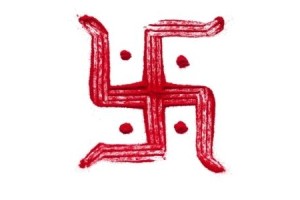
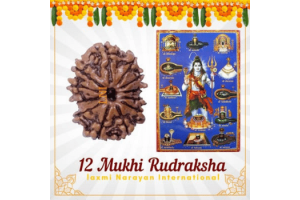

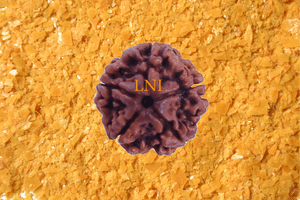
-300x200.png)
